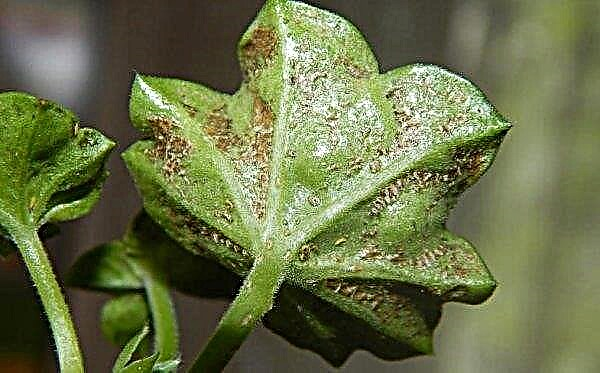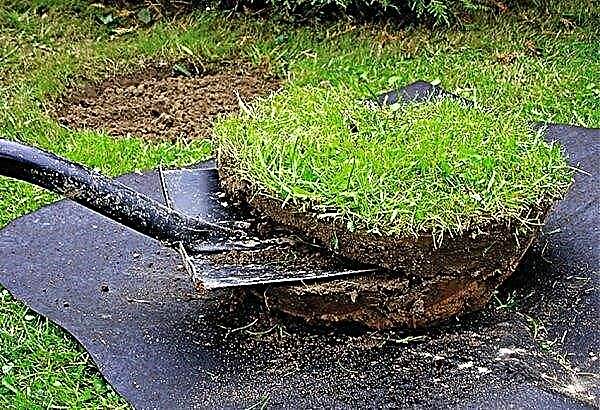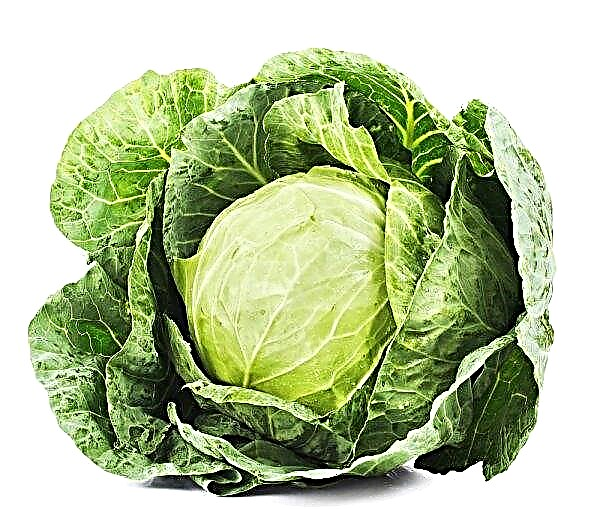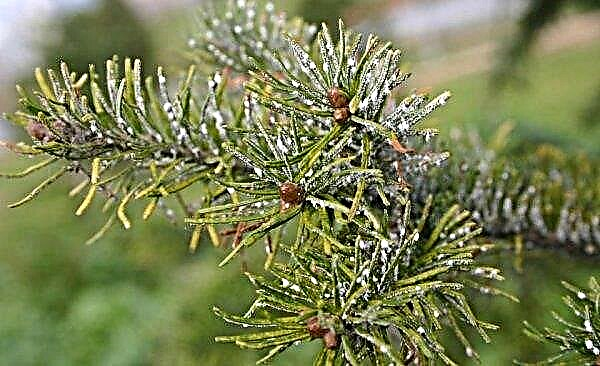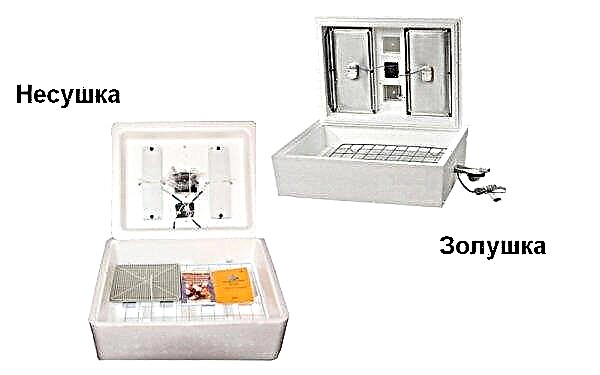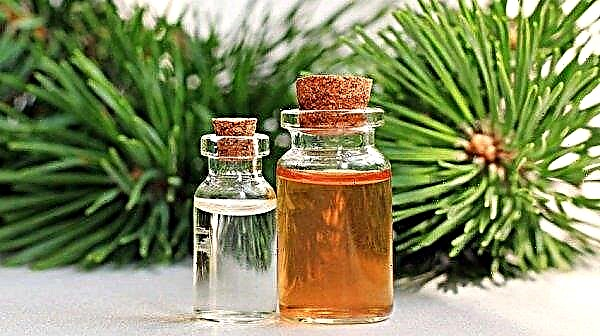Tomatoes grown in a greenhouse can be susceptible to attack by pests and the development of various diseases. In order to preserve tomatoes and harvest a rich and healthy crop, you need to figure out what can harm the plant and how to deal with the scourge.
Pests of tomatoes in the greenhouse and the fight against them
Among the most common pests of tomatoes growing in a greenhouse include a biting scoop, whitefly, wireworms, nematode, bear and spider mite. It is not difficult to understand which parasites attack the landing, since they have a different description and appearance. Pests are divided into those that infect the root system and which eat the green part of the plant, so you need to check for their presence not only leaves and stems, but also the soil.
Gnawing scoop
A biting scoop is a caterpillar of black, dark gray or brown color, the size of which can vary from 3 to 4 cm. The pest hatch from an egg previously laid by butterflies. The danger arises precisely during the period of the insect's stay at the caterpillar stage.

Signs of invasion scoops:
- larvae are found on the green part of tomatoes and soil;
- stalks, petioles and foliage are gnawed.
For cooking you will need:
- water - 5 l;
- powder - 25 g.
Video: How to get rid of scoops
Alternative treatment is also offered. One of the most popular is spraying with a decoction of wormwood.
For cooking, the following components are required in such proportions:
- water - 5 l;
- fresh herbs wormwood - 1.5 kg.
- Boil water.
- Add wormwood.
- Boil for 20 minutes.
- Cool the broth.
With this tool, you need to spray the tomatoes.
Another broth that is used as a folk remedy is a preparation from tomato tops.
To prepare it, you need to take:
- water - 20 l;
- tomato tops - 1.5–2 kg.
- Fill the greens with water (5 L).
- Put the mixture on fire and bring to a boil.
- Boil for half an hour.
- Strain the broth.
- Mix the concentrated product with the remaining 15 liters of water.
Whitefly
Whitefly is a small insect of light yellow color with white wings in an amount of 2 pairs, growing in size no more than 1.5 mm. During the ripening period, the whitefly has the form of flat oval larvae of a light green color.

Signs of a pest:
- leaves are covered with larvae or flies;
- dark spots are observed on the green part;
- the leaves turn yellow and dry.
Common drugs against this insect are drugs:
- Citcor (1.5 ml per 10 l of water);
- Fosbetsid (5 ml per 5 l of water).
For processing, it is better to choose the morning or evening period when the sun is not active.
Wireworms
Wireworms are caterpillars of a yellowish color, outwardly similar to worms, have a dense appearance and a length of up to 3 cm. As a result of development, the pest turns into a nutcracker no less dangerous for the crop.

The signs of the appearance of wireworms in a greenhouse include:
- the appearance in the soil of yellow caterpillars that feed on the roots of tomatoes;
- pest eating stems.
- soil treatment with a mixture of sand (or sawdust) and Bazudin insecticide;
- liming of soil;
- the use of mineral nutrition.
Did you know? The nutcracker beetle lays eggs, which after a few months turn into wireworms. The development of caterpillars into an adult occurs over 4.5-5 years.
Nematode
Nematodes are worms that feed on the rhizome system of tomatoes.

Symptoms of a nematode lesion:
- distribution of larvae in the soil;
- neoplasms on the roots in the form of growths and swollen areas.
- Ecogel (treatment is required every 14 days);
- Basamil.
Did you know? Scientists assume existence inabout the whole world about 1 million species of nematodes.
Medvedka
Medvedka is an insect of brown-brown color, characterized by a large size (up to 10 cm). The pest lives in the soil where it digs small minks; it often becomes noticeable when digging soil.

Signs of bear presence include:
- visible damage to the roots;
- the presence of minks near the bushes;
- multiple egg deposits at a depth of 12–15 cm;
- the appearance of larvae in the ground.
These include:
- Medvetox;
- Thunder;
- Rembek Granule;
- Force;
- Grizzly.
To prepare it, you need to take the following components:
- ground hot pepper - 75 g;
- water - 5 l.
Important! As emergency assistance, gardeners are advised to pour 400 ml of vinegar into the mink.
Spider mite
A spider mite is a very small pest that leaves a web on the inside of the leaf.

You can determine the attack of this insect by the following main signs:
- spider web on leaves;
- specific point yellowing of foliage;
- dryness and drying of the tops.
To prepare the solution you need:
- water - 5 l;
- Fitoverm - 5 ml.
Common tomato diseases and their treatment
Greenhouse tomatoes are more susceptible to the development of diseases than growing outdoors. Timely cured plant damage is the protection of the crop from adverse effects.
Late blight
Late blight is a fungal disease that develops as a result of late blight. Symptoms of its development are dark brown spots on the tops and fruits. The reason for the occurrence and spread of infection is a high level of moisture and low temperature.

For treatment, it is necessary to reduce the frequency of watering to 1 time in 1-1.5 weeks. In the initial stages, treatment with Previkur and Quadris is acceptable. In advanced cases, the use of Infinito, Bravo or Kuproksat funds is recommended.
Mosaic
Mosaic is a disease in which spots of dark and green-yellow hues appear on the leaves, and the green itself twists. Modern tomato varieties have immunity to the disease, so its development is possible only on old species bred in the twentieth century.

All bushes that were affected by the disease must be removed from the greenhouse along with soil and burned. Non-infected plants are treated with Pharmaiod.
Vertex rot
Symptoms of vertex rot are stains on unripe tomatoes with an unpleasant odor, having a dark color. They can be both wet and dry. Rotting occurs due to high humidity and cold air.

Rotten plants are extracted from the soil, the rest is treated with a solution based on calcium nitrate, which is diluted in a proportion of 0.5 tbsp. tablespoons of the drug in 5 liters of water.
Brown rot
Brown rot, which is also called phomosis, primarily manifests itself through rotting in the area of the peduncle. The disease develops due to a violation of the microclimate; it is also called fertilizer with fresh manure.

Affected parts of the bushes must be removed. Healthy plants must be treated with Fitosporin-M.
Powdery mildew
Powdery mildew received this name because of its external manifestation. Symptom of the lesion is the appearance of white plaque on the leaves. The spread of infection is fungal microorganisms that appear in the case of the formation of droplet moisture on the leaves.

Infected areas are removed and burned. The remaining bushes are treated with suitable drugs, such as Epin, Bactofit, Fusaxin, Amistar, Topaz, Tiovit Jet or others.
Important! The soil in the greenhouse may contain the pathogen for a long time, so it should be dug up and replaced.
Preventive measures
Prevention of diseases and pests is an important part of care when growing tomatoes in a greenhouse.
As preventive measures, the following actions are required:
- regular weeding;
- periodic loosening of the soil;
- greenhouse disinfection before planting;
- maintaining optimal humidity (60–70%) and temperature (20–25 ° С);
- watering 2 times a week with warm water;
- regular ventilation of the greenhouse;
- use of drugs during planting - for example, Gliocladin, Gamair, Alirin B or Trichodermin;
- if possible timely removal of pests manually.
Pests and diseases of tomatoes are an annoying nuisance, which, fortunately, can be solved by using modern drugs. Timely prevention and treatment of diseases that develop in tomatoes in greenhouse conditions guarantee a successful harvest.

